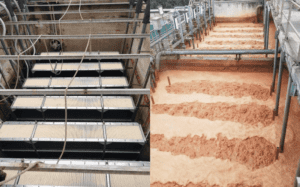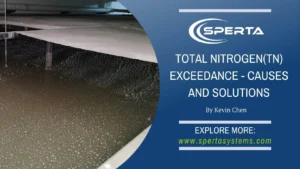In today’s urbanized world, treating sewage is more crucial than ever. With growing populations and the need for sustainable water management, Sewage Treatment Plants (STP) have become vital. But how do these plants ensure the water they treat is clean and safe?
The MBR (Membrane Bioreactor) process is a modern method used in STPs. It combines biological breakdown with membrane filtration to treat sewage efficiently and produce high-quality effluent.
Sounds intriguing? Let’s delve deeper and understand the workings of the MBR process within STPs.
What Exactly is MBR?
MBR stands for Membrane Bioreactor. Think of it as a two-part system. The first part uses microorganisms to break down pollutants in the sewage. These tiny helpers eat up the bad stuff and clean the water. The second part is a membrane filter. It catches any leftover contaminants, ensuring the water that comes out is as clean as possible.

How Does the MBR Process Work in Detail?
Biological Breakdown
At the heart of the MBR process are the microorganisms. They thrive in the bioreactor and feed on the pollutants in the sewage. They break these pollutants down into simpler, harmless substances as they eat. It’s nature’s way of cleaning up.
Membrane Filtration
Once the microorganisms have done their job, the water flows through a membrane filter. This filter is super fine and catches any remaining contaminants. What’s left is clear, clean water.
Integration with Other STP Processes
While the MBR process is powerful, it’s just one part of an STP. It works alongside other processes, each handling a different stage of treatment. Together, they ensure the treated water meets safety standards.

Why Use MBR in STP?
There are a few good reasons why many STPs are now using MBR:
- Better Water Quality: MBR systems produce some of the cleanest treated water. It’s often so good that it can be reused.
- Space-Saving: MBR systems are compact. They fit well in places where space is tight.
- Less Waste: Traditional STPs can produce a lot of sludge (waste). MBR systems produce less, which means there’s less to dispose of.
Are There Any Challenges with MBR?
No system is perfect, and MBR has its challenges:
- Maintenance: The membrane filters can get clogged over time. They need regular cleaning to keep them working well.
- Energy Use: MBR systems can use more energy than some other treatment methods. It’s something to consider, especially if energy costs are a concern.
Conclusion
The MBR process in STPs represents a leap forward in sewage treatment. It’s efficient, produces high-quality treated water, and fits well in modern urban settings. As with all technologies, it’s essential to understand its benefits and challenges to make the most of it.
The above is the information about the MBR process in STP. If you still have questions about the membrane bioreactor or need to purchase MBR membranes, don’t hesitate to contact SPERTA.
Shanghai SPERTA Environmental Technology Co., Ltd. has specialized in producing water treatment products for many years. The company has the core technology of producing MBR membrane components. It has a high production capacity, aiming to build a high-quality brand of MBR production and sales all over the world. If you have any needs, please feel free to contact us.








